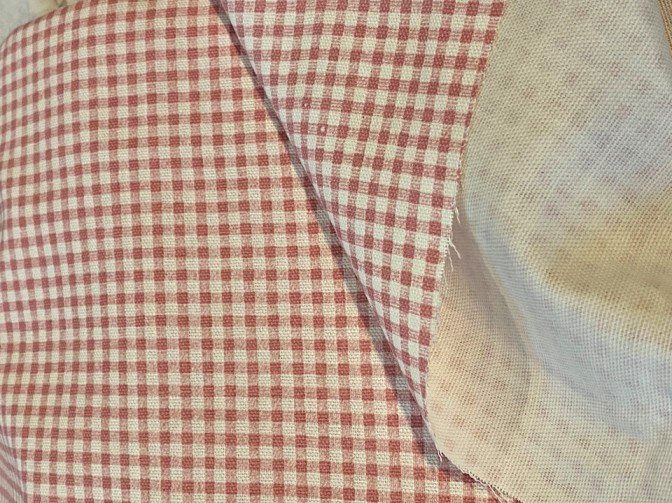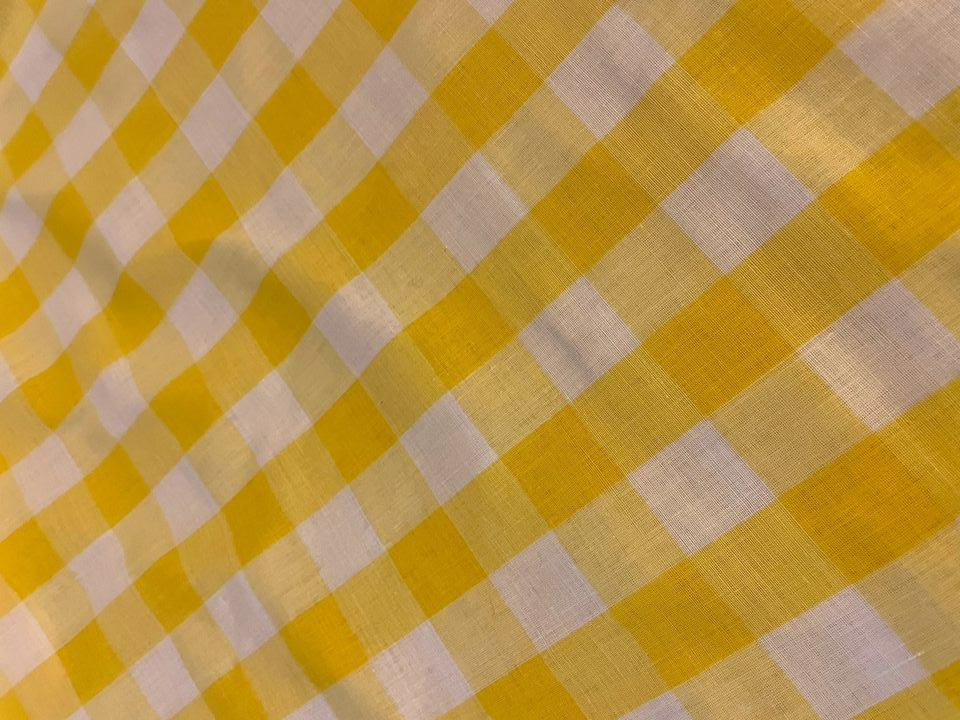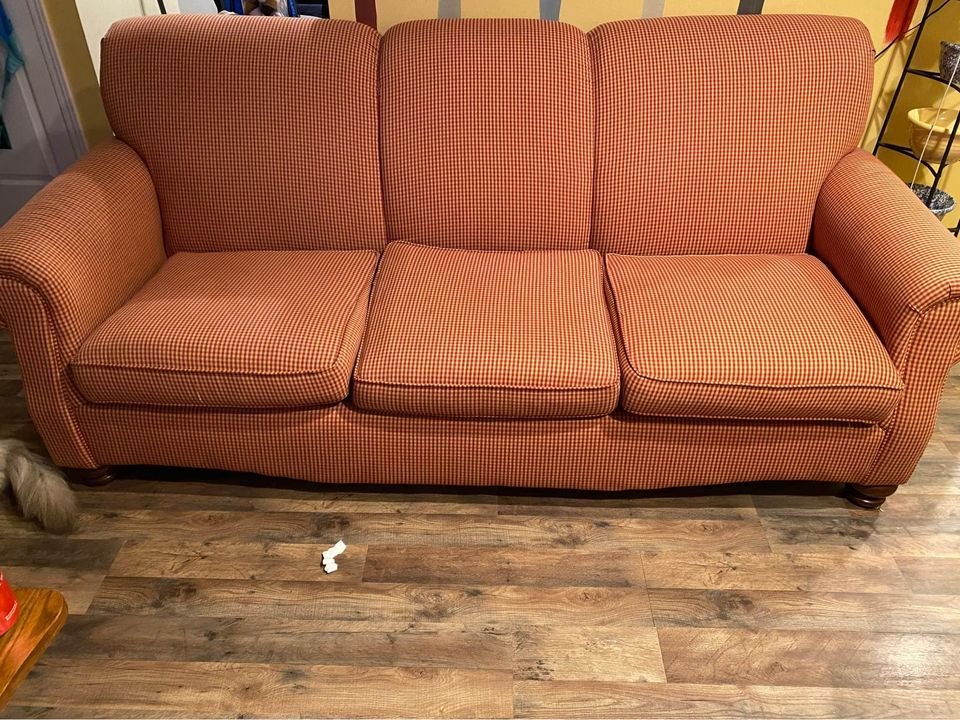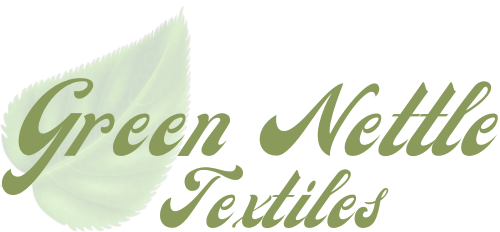Ever since Dorothy Day wore the blue and white checkered fabric in the Wizard of Oz, Gingham patterns have been a pop culture sensation that has stubbornly refused to die down. Today, people use gingham patterns in various ways and for different purposes. Fashion designers and home decorators have put them to good use, and some households use them for outdoor recreational activities.
But what is the gingham pattern, how does it differ from other checked patterns, and how can we make the best use of this ever-present fabric pattern? This article will explain everything you need to know about this close relative of the plaid pattern.
What is a Gingham Pattern?

Gingham is a checked cotton fabric made with dyed yarn woven against a white yarn. Textile workers dye the yarns before weaving commences. Textile manufacturers make nearly all gingham from cotton but use other cotton blends to make the checks.
There are many checked fabrics, but gingham differs from other checked fabrics having only two prominent colors. Because of this, it is referred to as a two-color check fabric. The checks could be of varying sizes. The gingham pattern is reversible; this means it appears on both sides of the fabric.
Textile workers use a plain weave when producing gingham patterns. Plain weaves are one of the most basic weave patterns. To get this, the weaver passes the weft yarn over and under the waft yarn. The intersecting yarns give the fabrics tiny pores that help the fabric’s breathability. The weave also makes the material lightweight or, at most, medium weight.
Because gingham patterns are usually weaved on cotton and cotton blend fabrics, they are highly suitable for summer clothes. They usually pair well with other fabrics, especially those with dark colors.
A Brief History of Gingham Patterns
Many historians traced the origin of gingham to 18th century England when Manchester’s textile workers changed the origin check patterns of the fabric.
Initially, the gingham pattern had a striped pattern. Its name came from the Malay word “genggang,” meaning “striped,” although there are disputes over this claim. An alternative report places the gingham’s origin with the Guingamp town of Brittany, France.
In either case, it is certain that following the work of Manchester’s textile workers, gingham fabrics gained popularity in the kingdom, and its fame lasted down to the Victorian era. In time, it spread to other parts of Europe and the U.S., eventually becoming a pop icon in the 50s and 60s.
How Is the Gingham Pattern Made?

Gingham is produced using cotton, cotton blends, or synthetic fiber such as olefin. Cotton is the most preferred fabric for making gingham.
The first step of production is arranging the bolls of threaded cotton fiber into a large dyeing machine. Some machines accept six bolls at once.
The textile workers place the dyed bolls in a loom and weave them against undyed fabric bolls to create the unique gingham checks. They can adjust how many dyed threads are weaved per square sheet to vary the size of the checks.
After successfully weaving the dyed and undyed threads against each other, the fabric is passed over a flame to singe off loose threads and bind the weaves to each other. Then, it is tested and washed to reduce fading, easy wearing, and shrinkage.
Many textile manufacturers will give the fabric an easy care finish. This treatment will make it easier to care for the fabric by reducing its tendency to wrinkle and making the fabric feel softer to the skin. After this, the fabric is cut to appropriate sizes, packaged, and shipped out.
Types of Gingham Patterns

Gingham is not the only two-color-checked fabric. But it differs from the other fabric because it uses white and other bold colors. However, the size of the checks can vary, with some being larger than others. The primary gingham checks are pin, mini, and large checks.
Pin Checks

Pin checks display the typical two-color-check of the gingham patterns. Most importantly, it is usually composed of a white check surrounded by another boldly colored dyed yarn. The only difference is that the checks are tiny, and they are the smallest type of gingham checks.
Textiles derive tiny pin checks by crossing the different yarns closely with each other until they look like tiny dots. They also make use of thinly spaced yarns, and this method of production also makes the pin check very lightweight.
The tiny dots of pin checks tend to give cotton fabrics an understated but sophisticated look, like viewing something complex but deceptively simple. Pin checks often make excellent materials for sewing office suites.
Mini Gingham Checks

Mini checks are another pattern that closely reflects the gingham design. Like the pin check, it is a two-color check pattern, with its white yarn interlocking with another bold color. It is slightly bigger than pin checks but smaller than the main gingham checks.
Unlike the pin checks, fashion designers mostly use mini checks for more casual attire because designers view them as dressier than the larger gingham checks. Like their evenly placed checks, Mini checks have found a perfect balance between sophistication and effortless class.
Large Gingham Checks

Large gingham has giant two-color checks, and they are malleable and are usually easy to use and work with. Some large Gingham checks can be as large as 24 millimeters, as opposed to those pin checks and mini checks that range from 3-6 millimeters.
Unlike their smaller counterparts, many designers shy away from mixing giant gingham checks with plain fabrics; Rather, they prefer using them as matching sets or not at all. They also make suitable table coverings.
Other Two Colored Checks: Houndstooth and Shepherd’s Checks
Houndstooth and Shepherd’s Checks are also two colored checks that closely resemble the gingham check pattern. Another similarity they have with gingham is that they may, sometimes, interweave bold colors on white background.
The Houndstooth check usually appears in black and white, with a slight chip at the intersection that resembles a tooth mark. It can sometimes come in more than two colors but may also have another color at its intersection, such as black and white houndstooth with a gray intersection.
Shepherd’s check is a large two-color check that does not have teeth marks at its intersection. However, while shepherd’s checks are often white and black, it doesn’t always have the typical white yarn of gingham. Some shepherd’s checks mix black with other colors.
Fabric Usage and Application

Gingham is a very versatile fabric used in various ways. Some of the uses of gingham include:
School Uniforms
Part of the early uses of gingham was as school uniforms in England, and that has not changed in many schools in England and its former colonies. Popular colors include blue, red, and green gingham.
Clothing

Gingham has extensive use in the fashion industry, and designers have used it to make various clothes from shirts, skirts, suits, jumpers, jackets, and even gowns. Due to this vast array of products, it is possible to wear gingham officially and casually.
Recreational Activities
Gingham is also linked to recreational activities such as picnics and beach days. The large gingham prints are almost synonymous with picnic table covers. Gingham is also a popular pattern for many swimsuits and beach towels.
Accessories
Fashion designers also use Gingham patterns to make beautiful accessories such as scarves, pocket squares, headbands, etc. They accentuate the beauty of most pieces and lend a bit of swag to the wearer.
Home Decoration

Home decorators have also made good use of gingham to add a bit of color and dimension to many homes. You can find gingham checks of varying sizes on upholsteries, table cloths, bed linens, and window treatments, and their checked design complements almost any home design.
Special Occasions
In some Asian countries, the contrasting colors of gingham patterns hold great significance. These countries use gingham prints for special occasions such as burials and national ceremonies.
Care For Gingham Patterns
Gingham is mostly cotton fabric and so is relatively easy to care for. You can either hand wash or wash with a machine and check the fabric care instructions before deciding. Some cotton materials are prone to shrinking; in such cases, handwash the fabric.
Use cool or warm water and set the machine to a gentle cycle. Using a gentle cycle prevents the fabric from wrinkling. Use a mild detergent but avoid using bleach, which causes the checks to fade. However, you can use a fabric softener to make the fabric feel softer and have less wrinkle.
Give the fabric a gentle stretch when they come out of the machine. Air dry gingham if possible. If not, tumble dry under low or moderate heat until completely dry.
Iron under low and moderate heat. Most cotton fabrics do well when you iron them on the wrong side or use a steam iron. Since gingham composes of cotton blends, don’t forget to consult the fabric care label. Store gingham in a cool, dry area. If possible, enclose the fabric in plastic containers.
Conclusion
Gingham is a plain woven cotton fabric used for official and casual purposes and as home decors. It is a two-color check fabric that has been very popular throughout history. Different types of gingham vary by the sizes of their checks.
Caring for gingham is relatively easy due to the method of production. Wearing gingham can lend a bit of suave to your dressing and your home.
